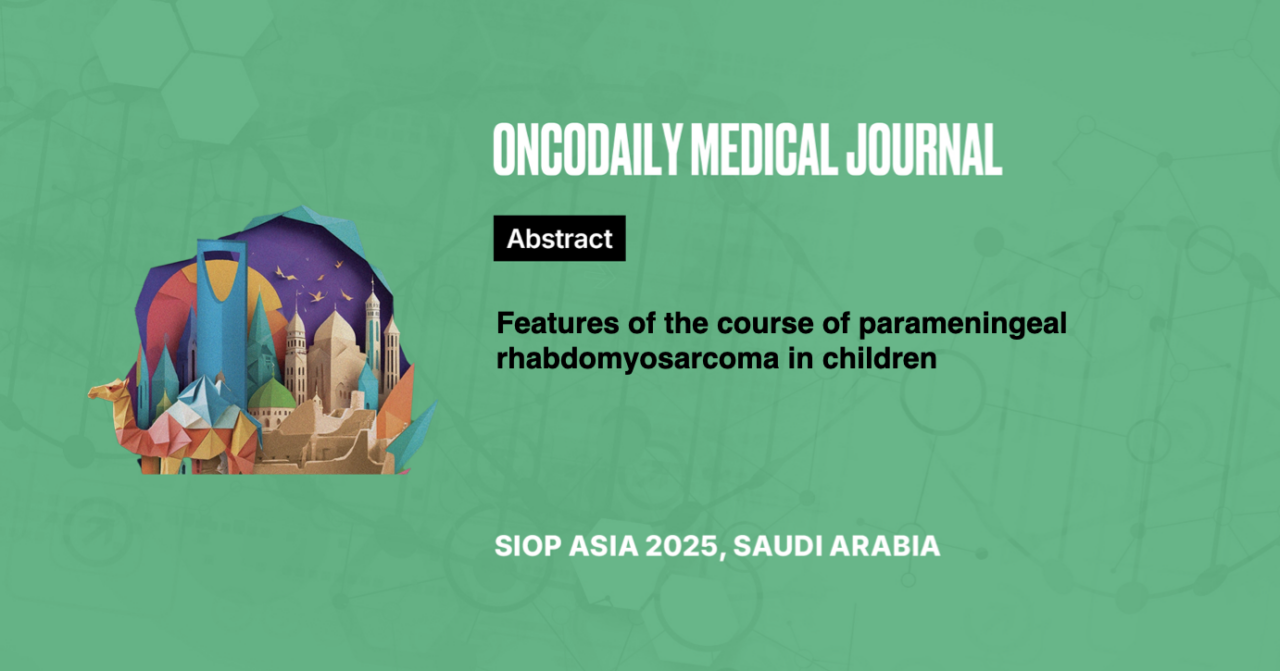Features of the course of parameningeal rhabdomyosarcoma in children
Abstract
Introduction: The parameningeal rhabdomyosarcoma (RMS) is an independent prognostic factor. Additional conditions that influence the prognosis of the disease include intracranial tumor spread and metastases to the central nervous system (CNS). Objective is to report the specific effects on the outcome of rhabdomyosarcoma (RMS) depending on the anatomical region of the skull involved in the tumor process.
Methodology: The study included 86 patients with parameningeal RMS, aged 1 to 17 years. Parameningeal RMS occurred in males 44 (51%) and females 42 (49%). The median age was 6 years. The embryonal RMS was diagnosed in 61 (71%), the alveolar variant in 22 (26%), the pleomorphic variant in 3(4%) cases. 57(66%) patients with II stage, 18 (21%) – III, and 11 (13%) – IV. The distribution of patients showed predominance of patients in clinical group III – 74 (86.0%), followed by group IV – 11 (13%), and group II – 1 (1%). Chemotherapy was administered using Vincristine, Actinomycin D/Doxorubicin, and Cyclophosphamide /Ifosfamide. Radiation therapy to the primary tumor and affected regional lymph nodes was performed after neo-adjuvant chemotherapy, with a total dose of 50.4 Gy. Surgical treatment was conducted for diagnosis verification (biopsy) and after chemotherapy or chemoradiotherapy, depending on the tumor’s response and the achievement of resectability.
Results: The overall 5-year survival rate (5-SR) for 86 patients with parameningeal rhabdomyosarcoma (RMS) was 68%, with a 5-year event-free survival rate of 55%. Patients with the embryonal variant of the tumor had a higher 5-SR (67%) compared to those with the confirmed alveolar variant (56%). The analysis showed that the 5-SR for stage III it was 62%, and for stage IV – 39%. In patients with tumor spread to the paranasal sinuses, this rate was 79%, in the infratemporal and pterygopalatine fossae it was 68%, and in the middle ear it was 33%. In the presence of an intracranial component of the tumor, the 5-SR was 52%. In the group of patients with stabilization of tumor volume, the survival rate decreased to 47%. Patients who underwent surgical treatment had better survival rates, with 78% compared to 69% for those who could not undergo surgery, with p=0.096.
Сonclusion: The prognosis of rhabdomyosarcoma (RMS) in children is negatively influenced not only by the intracranial spread of the tumor but also by the localization of RMS in the middle ear. Achieving a complete or partial tumor response after neoadjuvant chemotherapy increased the 5-year overall survival (OS) compared to the group where tumor volume stabilization was achieved. The possibility of surgical treatment in patients with RMS of parameningeal localization improves overall survival outcomes.





